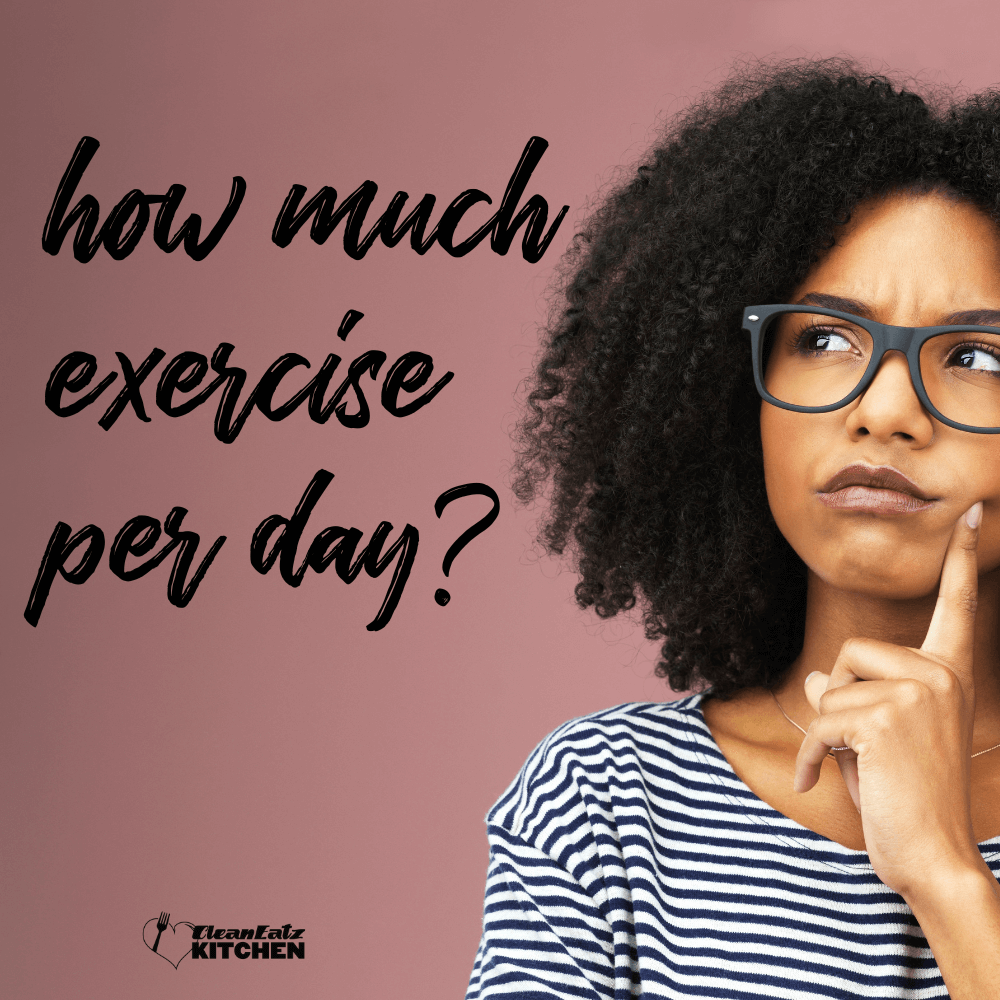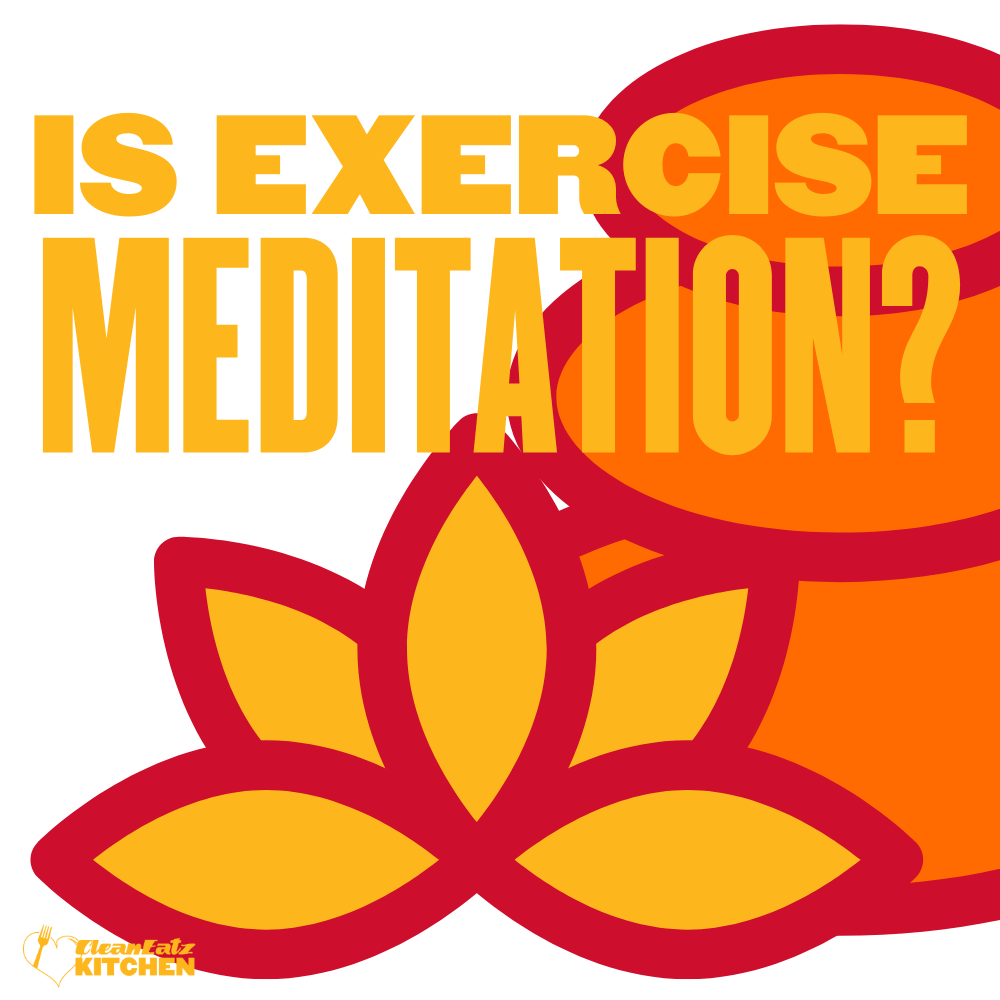
How Much Exercise Per Day? A Comprehensive Guide to Daily Fitness
Jason Nista
Exercises & Fitness
10 minute read
Determining "how much exercise per day" you need for peak health can be challenging. It's not always a one-size-fits-all answer.
However, the silver lining is the myriad of avenues to achieve your exercise goals. Whether you opt for a jog, gym session, or dance class, achieving the benefits doesn’t always require a strenuous workout.
In this piece, we delve into current studies on "how much exercise per day" ensures optimal health, offering insights on integrating fitness into a hectic lifestyle.
The Significance of Exercising Daily
Regular physical activity is paramount for your health. It stands as a pillar for overall well-being and as a deterrent to numerous ailments.
From warding off heart conditions, and strokes, to cancers, the benefits are manifold. It plays a pivotal role in weight management, stress reduction, and mood enhancement.
So, "how much should you exercise a day" to enjoy these advantages? Multiple factors come into play here, including age, weight, and fitness level. A general guideline to follow is a minimum of 30 minutes of exercise daily.
How Many Minutes of Exercise Per Week is Advised, and Its Origin
As per the Physical Activity Guidelines for Americans, adults should aim for at least 150 minutes of moderate to intense physical activity weekly. On top of this, it's also advised to engage in strengthening activities or strength training at least 2 days a week. This is to ensure healthy aging, functional independence, and overall health improvement.
For children and teenagers, the World Health Organization's guideline suggests as much as 60 minutes of activity daily. While it might seem demanding, it's generally achievable for most healthy individuals.
These ever-evolving recommendations are founded on the most recent studies highlighting the advantages and necessities of physical activity. These activities significantly reduce risks associated with premature death, coronary heart disease, stroke, high blood pressure, type 2 diabetes, obesity, and depression. It also combats the sedentary lifestyle and work culture prevalent today.
It's startling to learn that approximately 50% of adults live with a preventable or manageable chronic illness. Shockingly, only half of these adults meet the recommended exercise per week needed to curtail and avert such diseases. Furthermore, the healthcare expenses linked to inadequate physical activity can soar to 117 billion annually. These figures underscore the crucial role consistent physical activity plays in ensuring your health and wellness.
Why It's Important to Be Physically Active
Over recent decades, our lifestyles have evolved significantly. Previously, physical activity was embedded in our daily tasks, be it hunting, gathering, or farming. Now, given our more sedentary routines, the recommended exercise per week has become crucial for our health. To sidestep various health issues and sustain vitality into our later years, understanding how many minutes of exercise per week are necessary is vital.
Here are some outstanding health benefits to expect from consistent physical activity, movement, and strength training for all age groups:
- For children: Physical activity helps mitigate depression, boosts aerobic and muscular fitness, fosters bone health, encourages a favorable body composition, and enhances the development of mental and physical attributes like balance, coordination, focus, and attention. Moreover, it can even elevate academic performance metrics.
- For adults: Physical activity reduces the chance of encountering health problems such as high blood pressure, heart disease, and obesity. It bolsters aerobic fitness, mental health, and cognitive functions. For those already suffering from conditions like arthritis, regular movement can alleviate symptoms like pain.
- For the elderly and those focusing on healthy aging: Staying active is essential. It preserves strength, minimizes muscle and bone loss, maintains independence, lowers the risk of falls, and ensures we don't need external aids for daily tasks. Other benefits include improved sleep, joint mobility, balance, and a delay in cognitive decline.
The Array of Benefits from Consistent Exercise
Consistent workouts offer a treasure trove of rewards. As you engage, your body emits endorphins – the 'feel-good' hormones. This not only uplifts your mood but also acts as a shield against depression. Furthermore, exercise boosts energy and augments your overall sense of happiness.
On the physical spectrum, "how much should you exercise a day" has direct correlations with weight management, heart disease mitigation, stroke prevention, enhanced bone density, and arthritis deterrence. Regular physical activity can also decrease blood pressure and diabetes risks.
How Much Should You Exercise a Day?
While the general advice hovers around at least 30 minutes daily – be it brisk walking, cycling, jogging, or basic strength exercises – it's essential to recognize the nuances.
Your "how much exercise per day" question is inherently tied to your specific objectives. Are you on a weight loss journey? Aiming for muscle gain? Or is cardiovascular health your primary concern?
Each goal necessitates varying durations and modalities of exercise. Tailoring your routine to mirror your aspirations is crucial. Ultimately, "how much should you exercise a day" hinges on personal objectives and desired outcomes.
Incorporating More Physical Activity Into Your Week
Recognizing the importance of how many minutes of exercise per week is required can be daunting. The figure of 150 minutes might seem a lot. Here are some strategies to achieve the recommended exercise per week:
You don't have to complete all 150 minutes in one go. Break it up according to your convenience, such as 20-30 minutes, five times a week. Just three one-hour sessions per week can even exceed this recommendation.
Strength training exercises, like weight training or calisthenics, are highly recommended. They provide substantial benefits, including strength and muscle gains, and bone preservation.
Begin gently, especially if you've been inactive or are overweight. Starting with 10-20 minute daily walks can set a solid foundation. Ensure the activities leave you refreshed, not exhausted.
Engage in exercises you love. Research suggests that finding a fun exercise mode increases adherence. So, explore weight training, soccer, basketball, martial arts, running, and more.
Physical activity isn't limited to rigorous workouts. Simple changes like taking stairs, parking farther away, walking more, or integrating short breaks to move during your day can significantly increase your daily activity.
How Much Exercise Per Day: Risk Factors and Safety Tips
While we often ask ourselves "how much exercise per day is essential?" it's equally important to address the safety precautions linked to daily workouts. Always consult your physician before initiating a new fitness routine, particularly if you're over 40 or have pre-existing health issues.
Awareness of your body's signals is crucial during any physical activity. If you encounter pain or severe discomfort, it might be a sign to ease off. Incorporate stretching, warm-ups before exercising, and cool down afterward. Hydrate yourself, wear suitable attire for your activity, and apply sunscreen when outdoors.
To remain injury-free, combine exercises that enhance each other, for instance, balance running with low-impact activities like swimming. Also, blend strength training with cardio. This diversification prevents muscle imbalances, which might lead to injuries.
Understanding the Risks of Too Much Exercise
Exercise is critical for a healthy mind and body, but too much of a good thing can backfire. You might be eager to start your fitness journey, but it's important to take things slow and avoid overloading your body.
Exercise is healthy when done in moderation. Overdoing exercise can lead to health problems, including dehydration, muscle strain, joint pain, and even heart problems. When you exercise too much, your body goes into overdrive and starts to work against you. This can lead to injuries, burnout, and even depression.
It's important to be aware of the risks of overdoing exercise and find the right balance for you. Start slow and gradually increase your workout intensity as you become stronger. Listen to your body and be mindful of any signs that you might be pushing yourself too hard. And always remember that rest is just as important as exercise!
Signs and Symptoms of Overtraining
If you're starting to feel run down, more tired than usual, and your motivation to work out is waning, you might be overtraining. But how much exercise is too much? Overtraining can cause a number of unpleasant symptoms, including:
- Feeling constantly tired or exhausted
- Changes in mood, such as irritability or depression
- Decreased performance
- Problems with sleep
- Loss of appetite or weight loss
- Difficulty recovering from workouts
- Joint pain or headaches
Take a Break and Give Your Body Time to Recover
You might be eager to get started on your fitness journey, but it's important to remember that your body needs time to recover. Muscles need at least 48 hours of rest in between workouts, so trying to do too much too soon is a recipe for disaster. You might even experience pain, fatigue, and injury as a result.
Instead, start with a moderate workout routine and gradually add more as your body becomes stronger. Listen to your body and take a break when you need it—your overall progress will be significantly better this way.
Different Kinds of Exercises and Their Benefits
"How much should you exercise a day?" often depends on the type of exercise. Various exercises cater to distinct benefits tailored to individual preferences. Cardio exercises such as jogging and swimming excel in promoting heart health and weight management. On the other hand, strength training, like weightlifting or Pilates, bolsters muscles and bone density. Flexibility exercises, like yoga, enhance movement and curtail stiffness.
Engaging in exercises that resonate with your interests ensures it doesn't feel tedious. To maximize the benefits, diversify the types of exercises you engage in. Remember, when pondering "how much should you exercise a day," it's quality over quantity.
In general, you should target at least 150 minutes of moderate-intensity aerobic activity weekly when considering how much exercise per day is apt. Alternatively, 75 minutes of high-intensity aerobic workouts weekly is beneficial.
To further boost the results of your daily exercise routine, it's advisable to couple it with a proper diet. The right diet ensures your body receives essential nutrients to amplify outcomes. Clean Eatz Kitchen offers a vast range of diet plans, that complement your daily exercise requirements.
Final Thoughts
Understanding how much exercise per day is vital for overall well-being, but it's equally crucial to prioritize safety and choose diverse workouts. By integrating various exercises and complementing them with the right diet, one can achieve optimal health benefits.
FAQ
How much exercise per day is recommended for general health?
For general health, it's recommended to engage in at least 150 minutes of moderate-intensity aerobic exercise weekly or 75 minutes of high-intensity aerobic workouts.
Why is it important to vary the types of exercises I do?
Varying exercises help prevent muscle imbalances, reduce the risk of injuries, and ensure that different muscle groups and body systems get adequate attention, leading to well-rounded fitness.
Does diet play a significant role in complementing daily exercise?
Yes, a balanced diet ensures that the body receives the necessary nutrients to recover, build strength, and optimize the benefits derived from daily exercise. Choosing the right diet plan amplifies the outcomes of your workout sessions.
Related Articles
What are Forms of Low-Impact Exercises?
6 minute read
Is Exercise a Form of Meditation?
5 minute read



